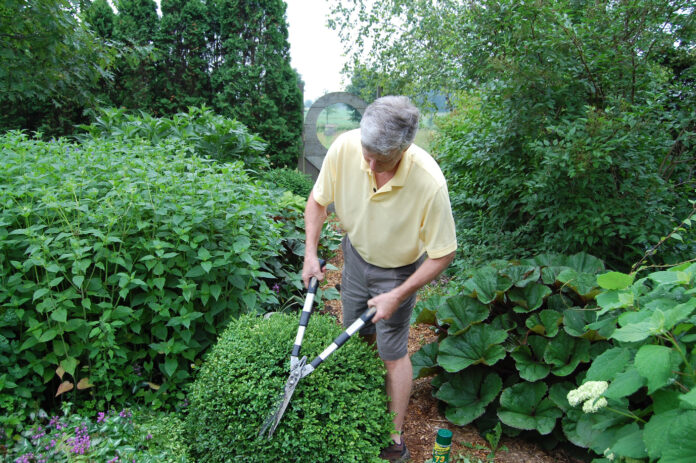
Of all the families in the plant world, none produce as many blank stares as “deciduous evergreen”. Deciduous means that a plant has leaves that are broad and fall off come autumn. And evergreen means that the foliage stays put.
Fact is, there are some wonderful plants in this category, which is sometimes referred to as broadleaf evergreen. There are several that we highly recommend. Here are our favourites:
• Euonymus. When a customer walks into the garden centre and asks for “anonymous” an experienced gardener knows what they really mean (much like the customer who seeks asylum each spring, who really wants to plant alyssum). Customer number one is looking for euonymus. A broadleaf evergreen that is winter hardy to zone 4, generally has a mounding habit and is available in deep green and variegated yellow or cream and green. All euonymus climb, if you provide support for them, as they grow aerial roots that stick to brick, wood or most anything that gets in their way.
Their vertical inclination is not a negative aspect of the plant as it does not grow fast, as a Boston Ivy or Virginia Creeper does. The growth of euonymus is more purposeful, giving you the opportunity to cut it back before it takes over your castle.
Florists use euonymus as a great addition to most flower arrangements.
Very few insect pests bother it, though insect scale can be persistent. Mark has a Big Leaf Winter Creeper euonymus that frames the window of his kitchen that has coexisted with scale insects for 12 years. Scale be controlled with dormant oil.
- Hardy Blue Holly. Do not confuse hardy blue with English holly, which grows like stink in B. C. and the U.K. but is not reliably hardy here. Hardy Blue holly is a hybrid between English (Ilex aquifolium) and winter hardy ground holly (Ilex rugosa). Introduced from the States about a generation ago, they have become mainstream landscape plants up to zone 5.
The flowers are dioecious, which means that some plants produce male flowers while others produce female flowers. It is best to look for a Prince and Princess when shopping for hardy blue holly. One prince can service several princesses, but if there is no prince, there will not be any red berry clusters come Christmas.
Like a rooster in the hen house. We are not talking about this anymore.
Hardy blue holly features blueish foliage, white flowers in spring and attractive red berry clusters late fall and winter. Except the male plants (sorry to bring it up again).
Matures to about a metre high and enjoys afternoon shade come summer. East or north facing gardens perform best.
- Boxwood. Another great garden performer that should not be confused with the U.K. cousin, English boxwood. Here in Canada, up to zone 4, we grow Korean boxwood hybrids. Look for Canadian introductions like Green Mound or Green Gem. They create an outstanding small hedge or as individual specimens clipped into a globe. Sometimes they are mass planted and cloud pruned into waves. Mark has over 50 in his garden. Note that boxwood tree moth has been popping up in the last couple years, starting in the west end of Toronto and spreading around the Golden Horseshoe. There are controls for it, but you must be diligent.
- Mahonia, or Canadian Holly. Not real holly, but a soft, faster growing look alike. Native to the Canadian west. Mature to about 125 cm hardy to zone 5. Striking yellow flowers in spring followed by clusters of blue fruit in fall. The fruit attracts some varieties of songbirds.
- Bayberry (Myrica pensylvanica) is a semi-evergreen which means what you think it does – usually it is evergreen, but a particularly harsh winter can burn off some of that foliage. We make exception here as it is an underappreciated native shrub which produces berries that attract robins, chickadees and warblers.
There is more to this story. There are trees and shrubs that hold their leaves over the winter and lose them when new growth pushes the old, coloured foliage off come spring. Many oak species, beech and ivies fall into this category.
Mark Cullen is an expert gardener, author, broadcaster, tree advocate and Member of the Order of Canada. His son Ben is a fourth-generation urban gardener and graduate of University of Guelph and Dalhousie University in Halifax. Follow them at markcullen.com, @markcullengardening, and on Facebook.

